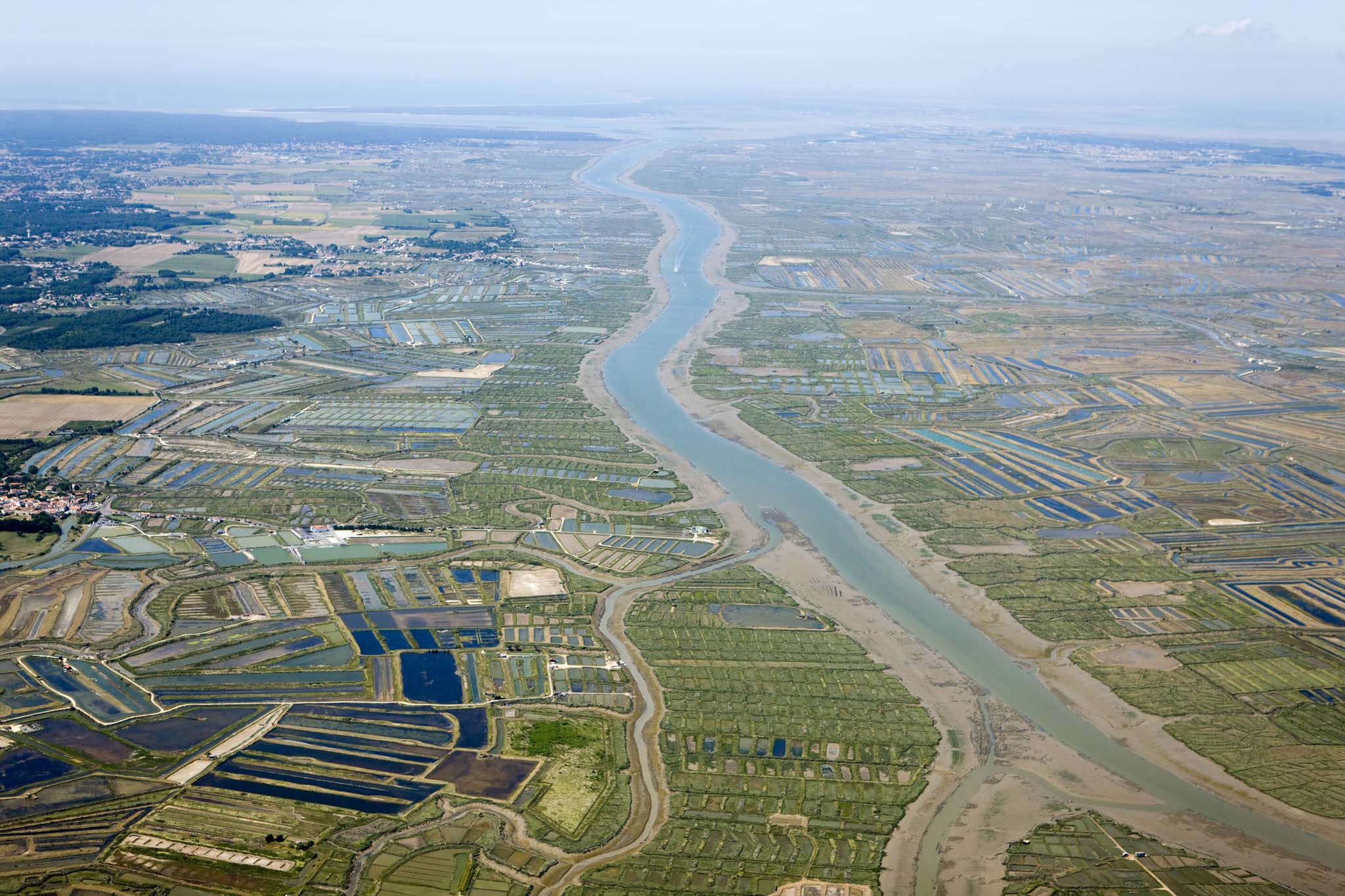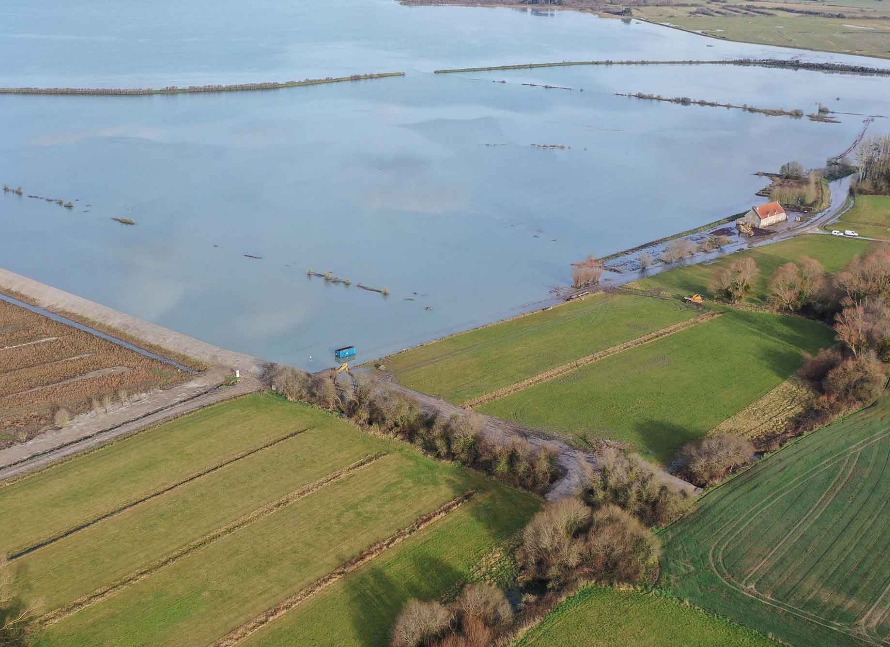Through the Adapto system, the Coastal Conservatory defends flexible management of the coastal strip. A pioneering device, which aims to better adapt to the effects of climate change on coastlines.
The observation is clear: according to the latest IPCC estimates, average sea levels could rise by more than one meter by 2100. On French coasts, it is therefore an understatement to say that adaptation to climate change constitutes a dizzying challenge.
In this context, faced with coastal erosion and marine submersion, the usual strategy generally consists of building structures such as dykes to try to fix the position of the coastline and protect homes and businesses from attacks by the sea. .
Dedicated to the protection of coastlines, the Coastal Conservatory has decided to favor a different strategy through the implementation of the Adapto system. Carried out from 2017 to 2022, this system supported by the European Union’s Life program aimed to demonstrate the benefit of so-called flexible management of the coastal strip in the face of the effects of climate change.
Among the sites concerned, numerous polders, spaces historically reclaimed from the sea by man whose dikes are beginning to break in the face of rising waters.
Sea level in Lancieux on 07/15/2022. Lancieux Bay on the north coast of Brittany, near Saint-Malo, is one of these polders. The dike broke in 2020. The Conservatory chose to reconnect this polder to the sea by not repairing the dike, which completely changed the natural environment. All the meadow type vegetation has given way to salt meadows. The Conservatory also bought this house, which was at risk of being invaded by water. However, a retro-coastal dike was built in the southern part of the former polder in order to protect a departmental road – Credit: N. Lamontagne, A. Collin, CGEL, EPHE-PSL
Flexible management of the coastal strip
“Concretely, flexible management of the coastal strip consists of giving a real place to nature so that it plays a role of shock absorber and protection of the coastline,” begins Adrien Privat, project manager at the Conservatoire du littoral, for La Relève and La Peste. The idea is to accept that our coasts will move, and to use natural environments as buffer zones in the face of climatic hazards, that is to say as natural allies.”
A strategy with numerous advantages, since flexible management of the coastal strip contributes to the restoration of heritage environments and the ecosystem services associated with them: maritime marshes, wet meadows, beaches, white and gray dunes, wetlands. The economic benefits are also important, since flexible management of the coastal strip also reduces maintenance costs and promotes the resilience of the system.
Ten pilot sites across France
In this context, while the Coastal Conservatory, which manages 13% of the coastal area, has been thinking for a long time about new ways to protect the coastlines, the public establishment has decided to select ten pilot sites where to test flexible management of the coastal strip as part of the Adapto system.
Distributed in mainland France, Corsica and Guyana over approximately 120 km of coastal length, these ten sites corresponded to five types of coastal environments: low and sandy Atlantic coasts, polderized low Atlantic coasts, Mediterranean lidos, Mediterranean salines and mangroves.
The Petit and Grand Travers dune site, located on the Mediterranean coast, near Montpellier. A road which had been built on this dune, as well as parking lots nearby, were removed to renature the site. The conservatory limited access to the site and created dedicated paths to allow vegetation to grow in order to encourage the accumulation of sand and stabilize the dune.
On each of these sites, the solution tested was to restore mobility to the coastline, rather than favoring the more traditional solution of building a dike or simply leaving it as it is.
“These solutions were tested on predominantly natural and agricultural land, but it might have been less interesting for coastal towns,” explains Adrien Privat, “where there are more businesses and homes. »
Accept the return of the sea to part of the territory
Located on the Atlantic coast, in Charente-Maritime, the Marais de Brouage was one of ten sites to benefit from the Adapto project alongside, among others, the Bay of Authie in Hauts-de-France, the delta of the Leyre to the east of the Arcachon basin, and the Vieux Salins d’Hyères in Provence-Alpes-Côte d’Azur.
In this Marais, the coastal dike has experienced regular damage due to repeated assaults from the sea, so much so that “a first breach was noted,” explains Nathalie Bourret, educational manager of the Moëze-Oléron nature reserve, where the Marais is located, for La Relève and La Peste. When the filled-in breach did not hold, we wondered what solutions could exist in the face of rising water levels.”
In this context, the Adapto system made it possible to study three scenarios for managing the coastal strip on the Brouage marsh, knowing that if the water were to rise, there could be « a risk for agriculture and in particular the cereal lands close to the shore,” explains Adrien Privat.
A scenario accepting the return of the sea to part of the territory was more particularly analyzed, “even if we are only at the beginning,” explains Nathalie Bourret. This first phase of work above all made it possible to bring together all the stakeholders around the table. Now we will have to enter a practical phase.”

Towards an expanded system
In this perspective, the Coastal Conservatory hopes to benefit from new funding to set up the Adapto + system, which would allow the public establishment to “systematize on a large scale the transition to flexible shoreline management” via, among other things , the creation of tools adapted to greater involvement of citizens and civil society, as well as the integration of flexible management of the coastal strip as an option for adaptation to climate change to be systematically considered.
Estimated at 11.5 million, compared to 5.5 million for the Adapto system, Adapto + would last five additional years on fifteen sites, including the Dunes of Dragey, in the Manche, the Loire estuary, in Loire-Atlantique or again the bay of Fort-de-France, in Martinique.
“With Adapto +, the objective is for flexible management of the coastal strip to become ‘mainstream’ and for that, communities really need to take up the subject,” concludes Adrien Privat. We also do a lot of awareness raising among the general public, because at first glance, the idea can be off-putting. People are afraid of no longer being able to access natural sites, that the landscape will be transformed…”
“But there are also many people who realize the need to adapt to climate change. What is really needed is pedagogy.”
And the challenges in the territory are immense. In its report on “public action in favor of adaptation to climate change”, published Tuesday March 12, the Court of Auditors castigated France for its lack of preparation in the face of the retreat of the coastline. Coastal erosion is eating away at 20% of French coasts. Faced with the phenomenon, the Court of Auditors pleads for flexible management, like that carried out by the Conservatoire du Littoral.




